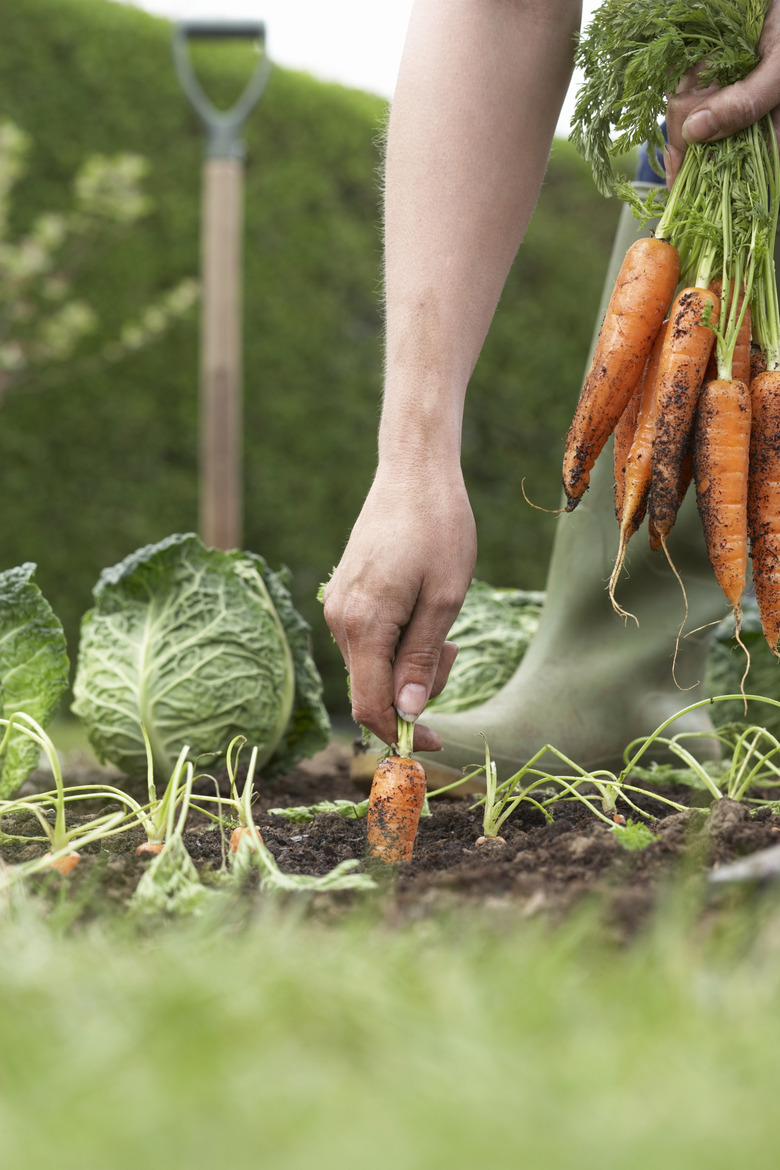The Best Fertilizer For Carrots
Carrots are heavy potassium feeders, but also require nitrogen, phosphorous and micronutrients. Environmental factors can prohibit the absorption of nutrients from the soil. A compacted soil, for example, prevents water from transporting nutrients to the roots of carrot plants. The University of Florida recommends soil analysis before amending soil for carrot production. The nutrient needs of carrots are determined by what is deficient in the soil.
Step 1
Potash provides potassium. Potassium is essential in carrot plants for photosynthesis, water and nutrient transport and plant cooling. Leaves of potassium deficient carrots curl backwards and have scorched margins. Stems of potassium deficient carrots are stunted. In acidic to neutral soils, amend soil with potash before planting carrots. Potash raises pH levels and is not recommended for alkaline soils.
Kelp
Step 1
Carrot plants need micronutrients in for cell and chlorophyll production. If a soil test indicates a deficiency of micronutrients, amend the soil with kelp. Kelp is an organic source of micronutrients, including calcium, magnesium and boron, which are often deficient in carrot plants. Calcium-deficient carrot plants have collapsed stems and withered leaves. Magnesium deficient carrot plants exhibit yellow leaves. Leaves of boron-deficient carrot plants grow in a rosette pattern. Older leaves of boron deficient carrot plants have an orange hue. Overfertilization with kelp causes carrots to be fibrous.
Step 2
- Potash provides potassium.
- Older leaves of boron deficient carrot plants have an orange hue.
Nitrogen-Phosphorous-Potassium
Step 1
Nitrogen (N), Phosphorous (P) and Potassium (K) fertilizers offer a balanced ratio of quick release of macronutrients for carrots. If a soil analysis indicates a deficiency in all three macronutrients, NPK can be applied 30 days after germination. Symptoms of macronutrient deficiencies include pale or purple leaves that die off quickly and dwarfed plants. For best results, select an NPK with 1-1-1 or 1-2-2 on the label. These macronutrients are responsible for many aspects of plant growth, including root and leaf formation and photosynthesis. Read and follow fertilizer directions carefully to ensure you apply the correct dosage. Too much nitrogen in the soil can result in cracked or forked carrots and can cause an over-production of leaves to the detriment of carrot formation. Over-fertilization with phosphorous can cause water pollution.
Step 2
- Nitrogen (N), Phosphorous (P) and Potassium (K) fertilizers offer a balanced ratio of quick release of macronutrients for carrots.
- If a soil analysis indicates a deficiency in all three macronutrients, NPK can be applied 30 days after germination.
